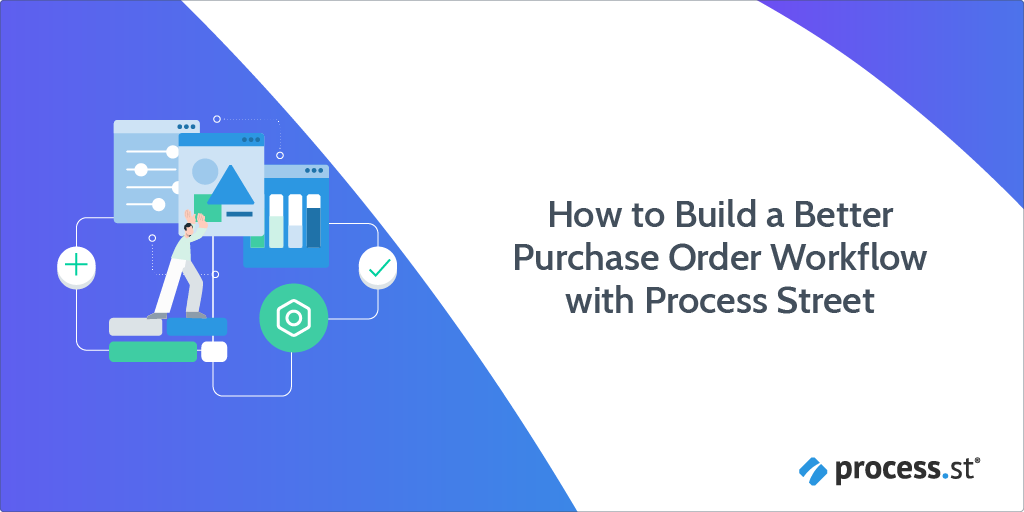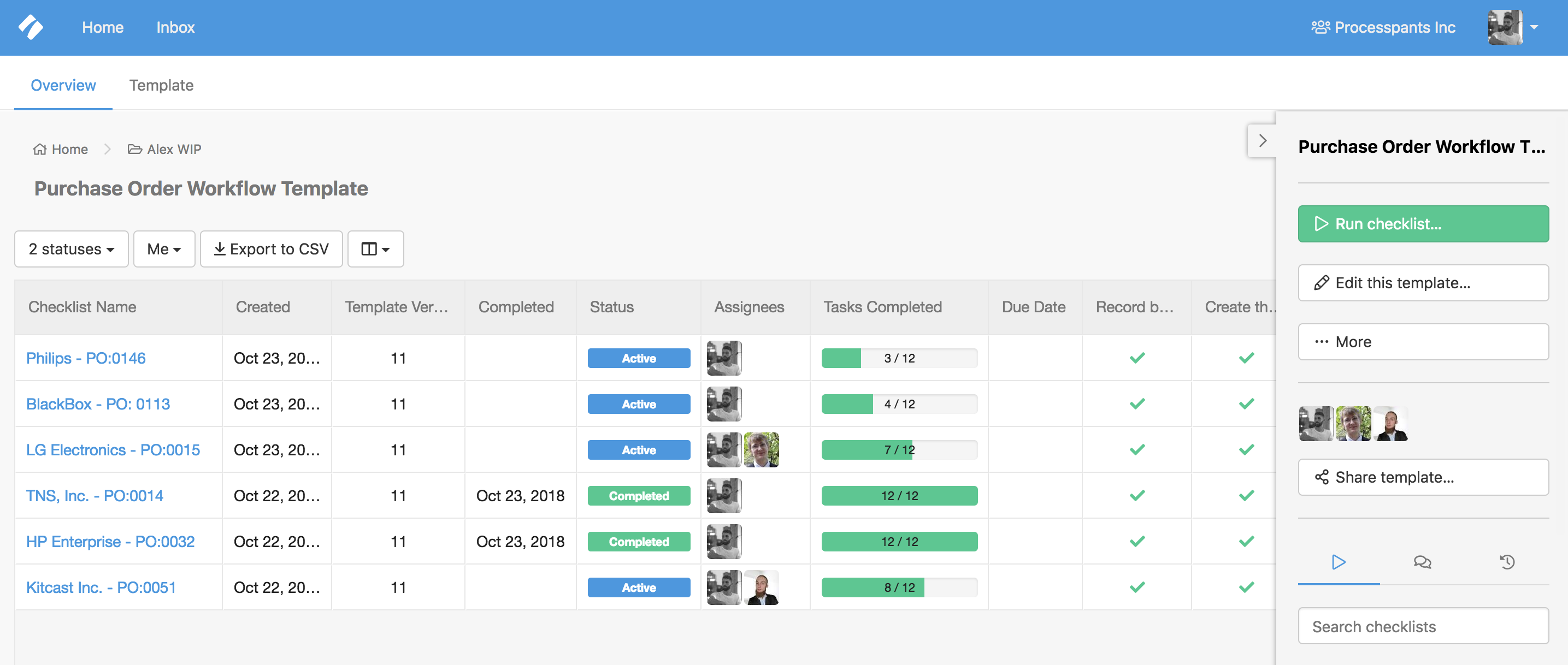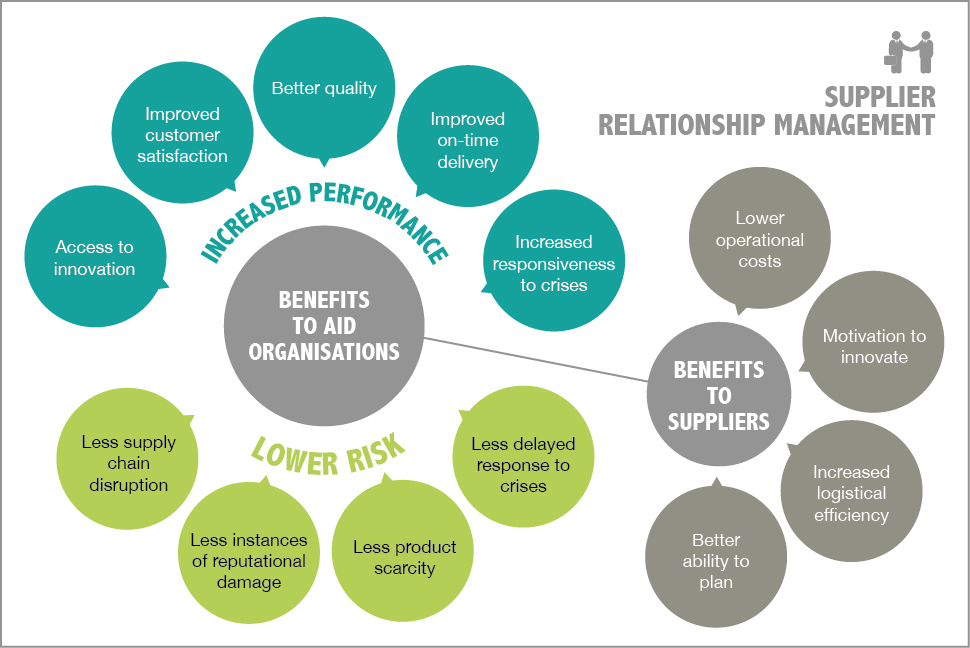
The importance of efficient purchase order management
Effectively managing purchase orders is a critical component of any business with vendor relationships. And yet, according to the founder & COO of Procurify, Kenneth Loi:
“Many organizations unwisely forego purchase orders because they perceive the paperwork to be a hassle that slows things down.”
He’s right. Paperwork is a hassle and does slow things down. However, this is not a good enough reason to forego purchase orders, hence the word “unwisely”.
From creating a requisition to gaining approval and receiving an invoice from the vendor, there are up to 7 documents involved in the purchasing cycle. That is a lot to keep track of for a single purchase.
And this only gets more complex as a business grows.
Maintaining a paper-based system at the enterprise level is virtually impossible. For smaller companies, it’s do-able, just incredibly inefficient.
The frustration and inefficiency that comes with managing piles of paperwork is no longer an unavoidable obstacle to overcome. By establishing an automated purchase order workflow, you can centralize documentation, seamlessly track progress in real-time, and shorten purchasing cycles.

Strong buyer-supplier relationships are essential for growth
Arguably more valuable than an increase in business efficiency is the development of strong, trusting relationships with your vendors. This is absolutely essential to business success, especially for retailers and MSPs. A recent report found that problems with vendors and suppliers are among the biggest risk factors retailers faced in 2017, and it is consistently cited as being a major risk factor for MSPs and the IT channel in general.
“You will not become a sustainable growth company if you do not have building and nurturing strong vendor relationships as one of your core strategies. Businesses cannot grow in a vacuum. We grow together, learning to leverage the resources that each brings to the table.” – Arlin Sorensen, Founder and CEO of the Heartland Companies
In this post, I’m going to introduce a simple yet powerful Process Street checklist, outline a few major reasons why paper-based purchase order management wastes time and money, and discuss 4 key benefits of an automated purchase order workflow
If you’ve already got an automated process in place, you can integrate the checklist with your existing processes to ensure that every step is being completed properly and on time.
Let get into it.
A simple checklist to get you going on the right path
To help get you started, we’ve created a checklist to guide you through executing the purchase order workflow.
Here’s a brief overview of the checklist’s flow, how it enables centralized collaboration with the supplier, and how it is designed to be integrated with procurement software to automate tasks:
- The checklist begins with recording the purchase order’s basic details and creating the requisition for internal approval.
- The requisition needs to be approved by a manager and the finance department before the purchase order is created and sent to the supplier.
- The supplier is automatically notified and invited to review the purchase order.
- The supplier either accepts the order or declines it, in which case a reason must be provided and sent back to the buyer.
- In the case that the order is accepted, the delivery date is confirmed, final details are sent to the receiving department, and the order is filed for internal records.
Take a look through the checklist below:
Designed to be integrated with procurement software
Process Street offers a wide range of automation capabilities through our integration with Zapier that allows you to set up various trigger-based actions to connect our checklists to procurement or document management software you already use to manage purchase orders.
For example, ProcurementExpress.com is recognized as one of the top procurement software providers and integrates with Process Street. When a new purchase order is created, the checklist can be automatically created in Process Street and assigned to the relevant individuals. This is one of 23 possible integrations with Procurement Express.com.
If you manage your purchase orders from an accounting tool such as Xero, Quickbooks or Zoho Books, there are hundreds of ways you can automate tasks by connecting them to the checklist.
For example, when the “Create the purchase order” task is checked, a purchase order containing all relevant data can be immediately created in Quickbooks, enabling the approval process to begin without delay and, ultimately, get the order on its way as soon as possible.
Experiment with the checklist and begin thinking about how it can be integrated into your processes!
How paper-based purchase orders waste time and money

Inability to prevent late deliveries
If you are shuffling around various documents to track the progress of multiple purchase orders, how can you take any measures to prevent late deliveries?
Yup, you can’t.
The most you can do is start calling or emailing the vendor, express your frustration, potentially annoy them and, at worst, seriously damage the relationship.
If your supplier is also stuck on the paper bandwagon, it’s really a mess.
“He’ll put you on hold and you may hear him cursing under his breath while struggling to locate your order. Only after minutes of going through a clutter of papers would he tell you that your delivery will be late.” Medium, Why Paper-Based Purchase Orders Waste Time and Money
What a waste of time, energy, and ultimately, money, not to mention the potential cost of creating tension between you and the supplier.
Exposure to fraud
Paper-based purchase orders can be easily tampered with. Examples of what naughty things could be done by fraudsters include:
- Forging of your signature
- Amendments made to quantity or price figures
- Inflated or duplicate invoices submitted by the supplier
- A fake entity created to bill you for fake services
Such risks may seem minimal, but they are in fact surprisingly common. Just recently, the FBI alleged that a contractor generated a fraudulent purchase order for $600,000 of HVAC equipment in 2013 when working on school improvements.
There are of course various measures you can take to prevent procurement and payment fraud and identify red flags, the most fundamental of which is to move away from paper-based processes.
By using procurement software to manage your purchase order workflow, you can ensure that every purchase order and activity related to it is traceable, and no one without proper permission is able to manipulate documentation.
You can also verify that all purchasing processes have followed a three-way match to ensure accuracy. This can be easily done by using our Accounts Payable Process checklist.
The accounts payable checklist provides guidance on how to validate all documentation involved in the purchase order workflow, and helps you ensure that the payment is being executed properly to avoid late fees or misunderstandings with the supplier.
Encourages rogue spending
Rogue or maverick spending is a major problem for most large organizations. According to a research report by The Hackett Group, 29% of indirect spend is off-contract, while Applegate PRO research indicates that it’s not unheard of for rogue spend levels to reach up to 80% of an organization’s total spend.
It’s clear, therefore, that taking measures to reduce it (i.e. integrating procurement software), has a significant impact on a company’s finances. In fact, one report found that a reduction of 5 to 10% in rogue spending can translate into millions of dollars in savings.
The root cause of unreasonably high levels of rogue spend is primarily a lack of visibility into the company’s spending. A lack of visibility equals a lack of accountability, and so the problem snowballs.
When an employee knows that purchase orders from hundreds of different vendors are all dumped in a filing cabinet in the basement, what’s stopping them making a couple of extra orders of stuff they think will be useful?
Inefficiency due to human error

We’ve written tons about human error here at Process Street. It’s exactly what we are on a mission to minimize.
In the context of paper-based purchase orders, human error represents a high-risk inefficiency that could result in a lot of wasted time and money, and potentially cause difficult financial situations for the organization as a whole.
For example, reporting inaccurate financial reports. If there are errors in calculations regarding company spending, this will leak down into official reports and could, in turn, limit the chances of securing financial assistance from banks or venture capitalists.
3 key benefits of an automated purchase order workflow
Though I have touched on these points in the previous section, I’d like to provide you with a brief summary of 3 key benefits that come from establishing an automated purchase order workflow.
In addition to (hopefully) convincing you that paper-based purchase orders are well and truly a thing of the past, this will clarify why integrating Process Street with procurement software will make recurring tasks as painless as can be.
Increase efficiency (faster processing times)
Back to the buzzword of the century – efficiency. What this really means in the context of purchase order workflows is that the end-to-end process of order creation, approval and fulfillment can be securely automated, relieving you and your colleagues of the need to spend time manually tracking progress.
While the procurement software will do the nitty-gritty work for you, Process Street checklists will ensure that each step is being completed as and when it should be.
Our checklists enable you to not only complete the requisition approval and order creation process but also to collaborate with your supplier from within the checklist.
The supplier is able to confirm acceptance of the order or if they choose to decline it, can provide a reason and notify you immediately.
Automation and seamless communication result in faster processing times and shorter purchasing cycles. It’s a win-win situation.
Track progress in real-time
Remember when I said that you can’t prevent late deliveries if you are rummaging through piles of paperwork and frantically calling your supplier to figure out where your order is?
Well, if all information is centralized in an online platform, such moments of frustration and potentially panic simply won’t be a concern.
An automated purchase order system provides you visibility into spend at a granular level, enabling you to track progress on pending purchase orders. It also provides you with better spend data which you can leverage in negotiations with your suppliers.
Improve supplier relationships

No one wants to be on bad terms with their suppliers.
Over the course of his 27-year stint as Founder and CEO of the Heartland Companies and 30 years of experience working with MSPs, Arlin Sorensen observed 5 key barriers to growth:
- Building a consistent and predictable sales engine
- Generating quality and adequate lead flow through marketing
- Disciplined process, operational and financial controls
- Leadership development and creating next-generation leaders
- Building effective win/win relationships and partnerships
He then writes:
“Without a doubt, the most important of these is the last–the ability to create, nurture, maintain and grow deep and lasting relationships that are good for all involved. There is an attitude in the IT channel that vendors and distributors are at best a necessary evil and at worst the enemy. If you don’t hear anything else I write here, please remember this: Growth companies not only value their vendor relationships, but give them equal or more attention and care than their customer relationships.”
Establishing an automated workflow for managing purchase orders turns a potential lose-lose situation into a win-win because it enables efficient operational execution for both sides and opens up new communication channels to ensure that you are consistently on the same page.
Conclusion
Of course, purchase orders are only a small component of buyer-supplier relationships, yet they carry an enormous potential for causing business inefficiencies and at worst, major fraud that can destroy valuable relationships.
This is only a significant threat, however, when organizations use outdated, paper-based legacy systems that expose them to risk and frustrating operational execution.
By integrating an accounting or procurement management software with Process Street’s purchase order workflow template, you can work with your supplier to ensure that every task is being completed properly and on time. No unauthorized access to sensitive documents, no unnecessary delays, and no misunderstandings caused by a lack of communication.
We also have a couple of other vendor management checklists you may find useful:
How are you looking to improve your purchase order workflow? What are your thoughts on transitioning from a paper-based process to automated workflows? Perhaps you have some best practices you’d like to share. Comment below and let us know!







 Workflows
Workflows Projects
Projects Data Sets
Data Sets Forms
Forms Pages
Pages Automations
Automations Analytics
Analytics Apps
Apps Integrations
Integrations
 Property management
Property management
 Human resources
Human resources
 Customer management
Customer management
 Information technology
Information technology




Alex Gallia
Alex is a content writer at Process Street who enjoys traveling, reading, meditating, and is almost always listening to jazz or techno. You can find him on LinkedIn here